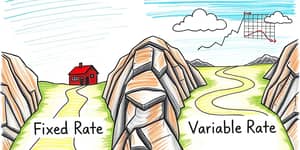
High-yield checking accounts have transformed the way consumers manage daily finances by combining the convenience of traditional checking with the power of high-interest returns. In today’s competitive environment, earning significant APY on funds you use every day is a game-changer for savers and spenders alike.
High-yield checking, also known as rewards checking, blends full functionality of standard checking—including debit cards, bill pay, and frequent transactions—with APYs that often rival or surpass savings products. While traditional checking accounts hover at around 0.07% APY, many credit unions and community banks now offer rates between 5% and 6.75%.
For example, the Credit Union of New Jersey advertises up to 6.00% APY, La Capitol Federal Credit Union offers 5.75% APY, and Genisys Credit Union’s Genius Checking reaches up to 6.75% APY with no monthly fees or minimum balance requirements.
These accounts are ideal for individuals who maintain a steady balance within the APY cap and use their debit cards regularly. Combined perks like ATM reimbursements and points programs can further amplify the overall return on your checking balance.
While high-yield checking offers compelling APYs, the rates are generally variable, meaning they can decline alongside broader interest-rate shifts. Requirements such as debit transactions, direct deposits, or eStatements ensure the advertised yields but may not suit every lifestyle.
Evaluating each institution’s fee schedule and eligibility requirements will help you avoid surprises. Look for accounts that clearly disclose how much balance earns the high rate and what actions you must take each month to maximize returns.
Understanding how high-yield checking stacks up against alternative deposit vehicles can guide you to the right mix of liquidity, convenience, and earnings.
*Check your institution’s policies for any specific withdrawal rules.
High-yield checking is a smart option for those who:
If you keep large balances beyond the APY cap or cannot meet the debit card thresholds, a high-yield savings account or money market account might serve as a complementary place for surplus funds.
Before opening an account, verify that it is FDIC- or NCUA-insured to protect deposits up to legal limits. Monitor rate changes regularly and be prepared to switch products if APYs decrease.
If you fall short of monthly transaction minimums, consider automating small recurring purchases or setting up direct deposits. Always read the fine print regarding balance caps, fee schedules, and rate adjustment policies to ensure the account aligns with your financial habits.
In a low-rate environment, high-yield checking accounts offer a compelling blend of convenience and earnings power. By carefully evaluating APYs, fee structures, transaction requirements, and digital tools, you can select an account that turns everyday expenses into an opportunity for growth. With the right features in place, your checking balance can work harder—without sacrificing the liquidity and functionality you rely on.
References













